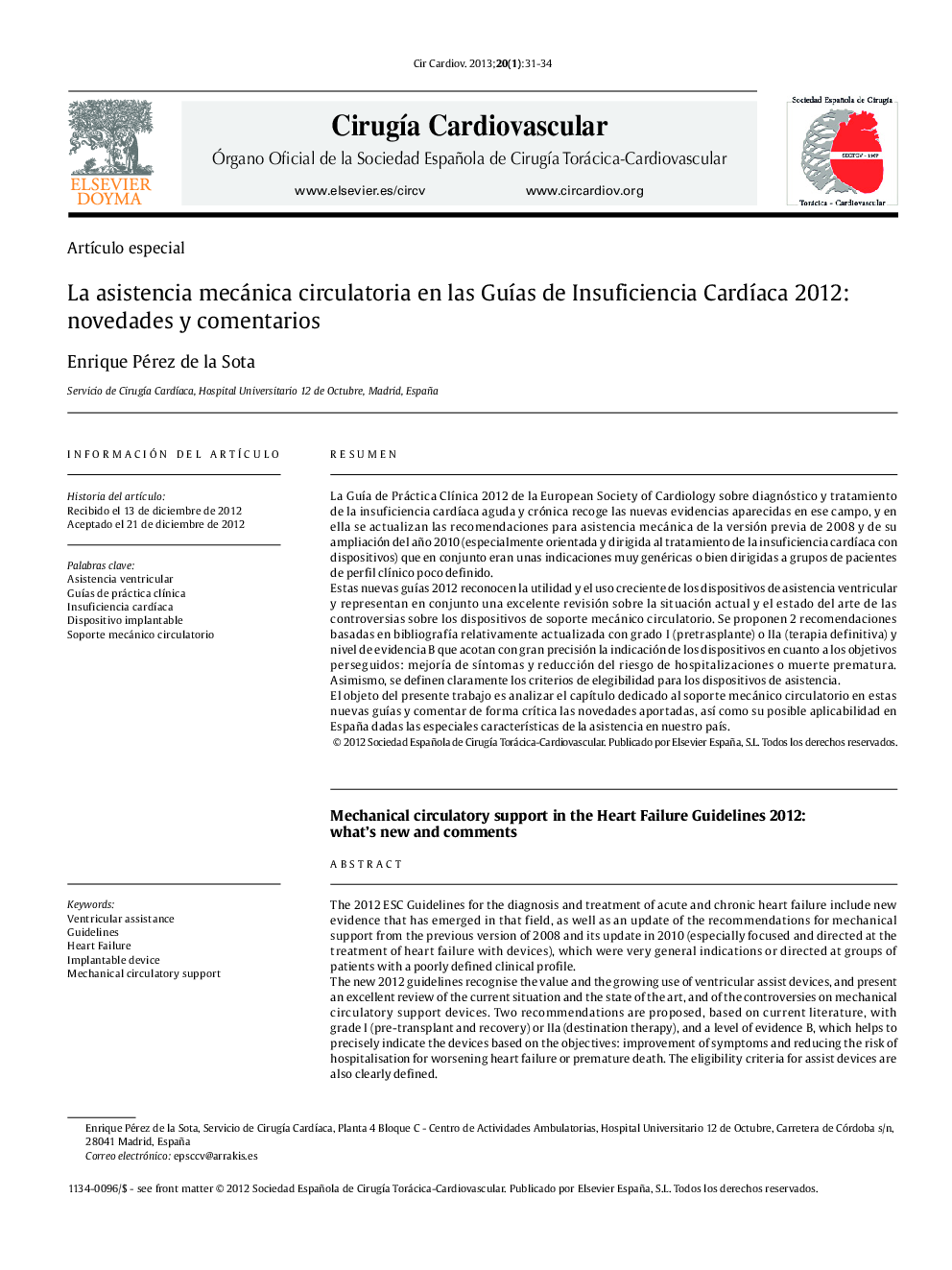| Article ID | Journal | Published Year | Pages | File Type |
|---|---|---|---|---|
| 2907626 | Cirugía Cardiovascular | 2013 | 4 Pages |
ResumenLa Guía de Práctica Clínica 2012 de la European Society of Cardiology sobre diagnóstico y tratamiento de la insuficiencia cardíaca aguda y crónica recoge las nuevas evidencias aparecidas en ese campo, y en ella se actualizan las recomendaciones para asistencia mecánica de la versión previa de 2008 y de su ampliación del año 2010 (especialmente orientada y dirigida al tratamiento de la insuficiencia cardíaca con dispositivos) que en conjunto eran unas indicaciones muy genéricas o bien dirigidas a grupos de pacientes de perfil clínico poco definido.Estas nuevas guías 2012 reconocen la utilidad y el uso creciente de los dispositivos de asistencia ventricular y representan en conjunto una excelente revisión sobre la situación actual y el estado del arte de las controversias sobre los dispositivos de soporte mecánico circulatorio. Se proponen 2 recomendaciones basadas en bibliografía relativamente actualizada con grado I (pretrasplante) o IIa (terapia definitiva) y nivel de evidencia B que acotan con gran precisión la indicación de los dispositivos en cuanto a los objetivos perseguidos: mejoría de síntomas y reducción del riesgo de hospitalizaciones o muerte prematura. Asimismo, se definen claramente los criterios de elegibilidad para los dispositivos de asistencia.El objeto del presente trabajo es analizar el capítulo dedicado al soporte mecánico circulatorio en estas nuevas guías y comentar de forma crítica las novedades aportadas, así como su posible aplicabilidad en España dadas las especiales características de la asistencia en nuestro país.
The 2012 ESC Guidelines for the diagnosis and treatment of acute and chronic heart failure include new evidence that has emerged in that field, as well as an update of the recommendations for mechanical support from the previous version of 2008 and its update in 2010 (especially focused and directed at the treatment of heart failure with devices), which were very general indications or directed at groups of patients with a poorly defined clinical profile.The new 2012 guidelines recognise the value and the growing use of ventricular assist devices, and present an excellent review of the current situation and the state of the art, and of the controversies on mechanical circulatory support devices. Two recommendations are proposed, based on current literature, with grade I (pre-transplant and recovery) or IIa (destination therapy), and a level of evidence B, which helps to precisely indicate the devices based on the objectives: improvement of symptoms and reducing the risk of hospitalisation for worsening heart failure or premature death. The eligibility criteria for assist devices are also clearly defined.The purpose of this article is to analyse the chapter dedicated to mechanical circulatory support in these new guidelines, and to critically discuss the novelties and their potential applicability in Spain, given the special characteristics of ventricular assistance in our country.
